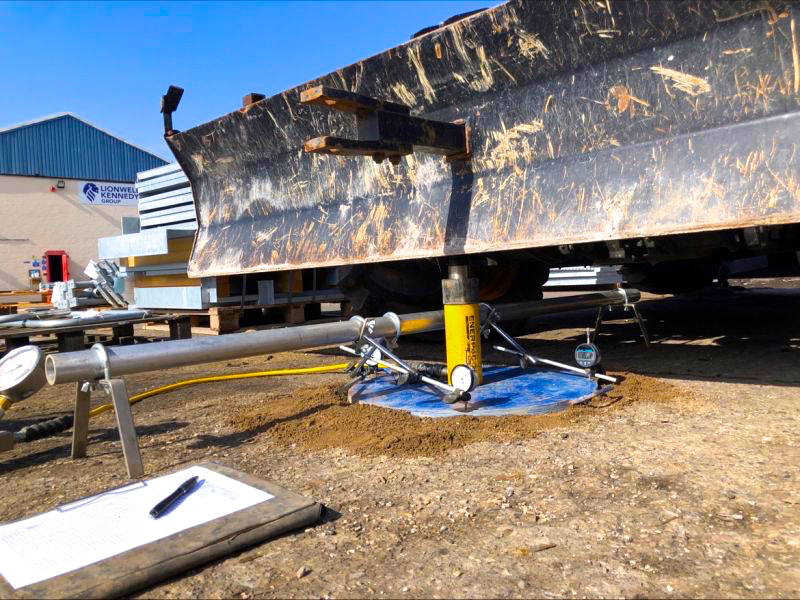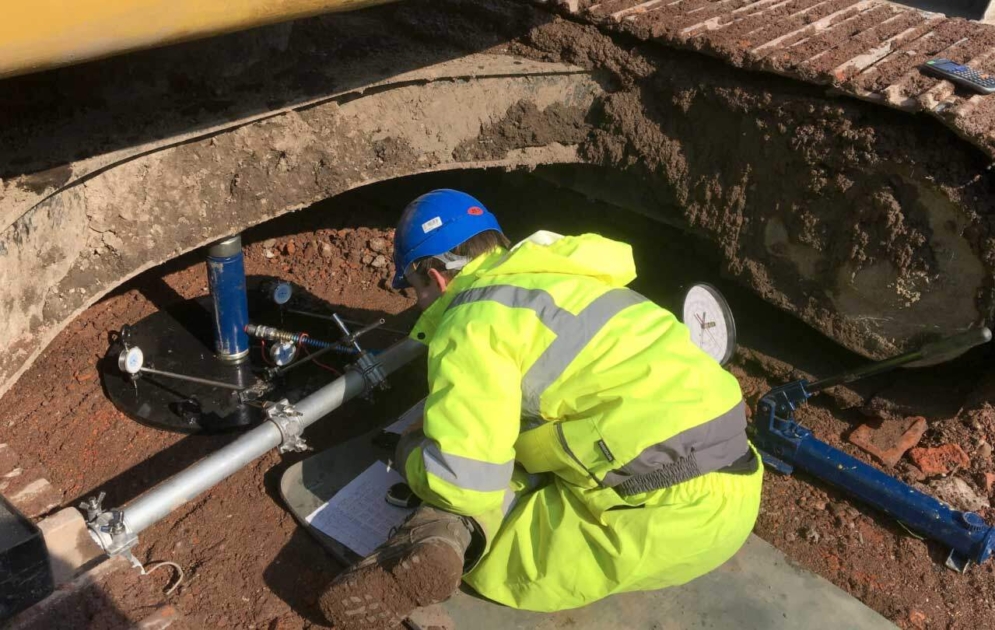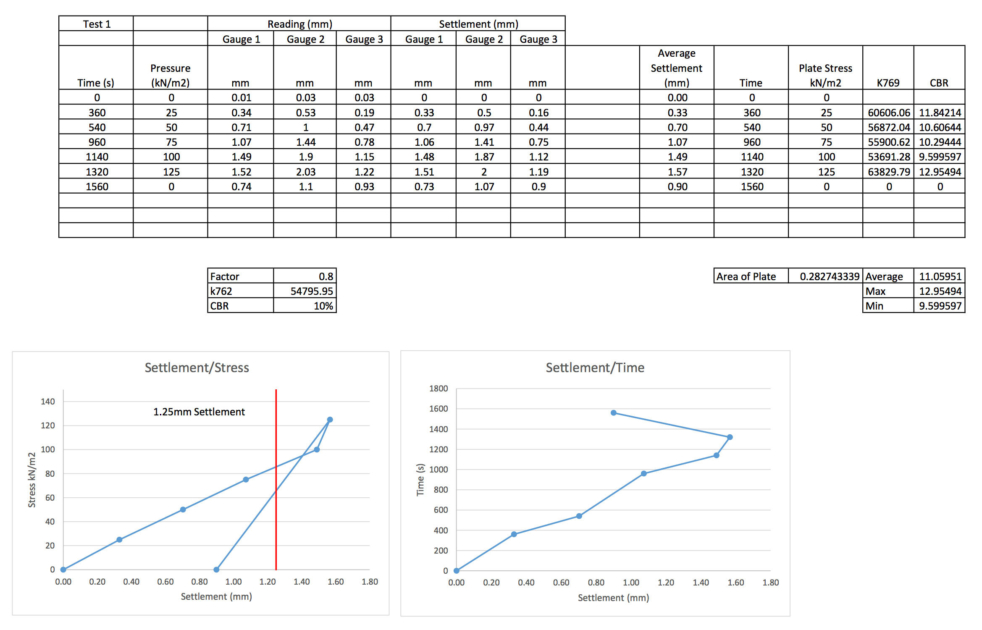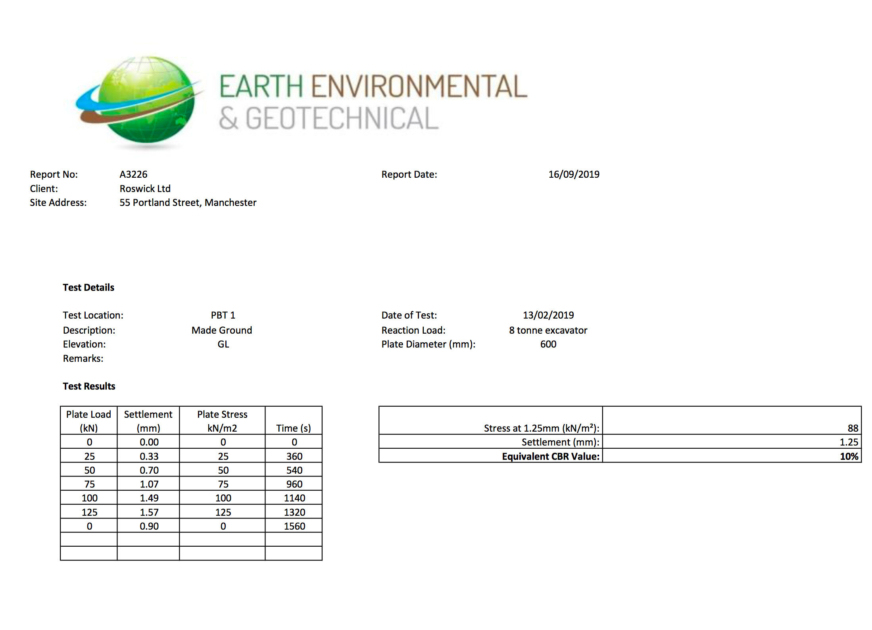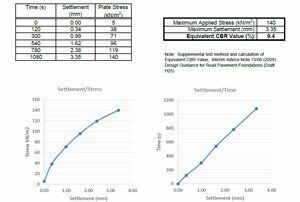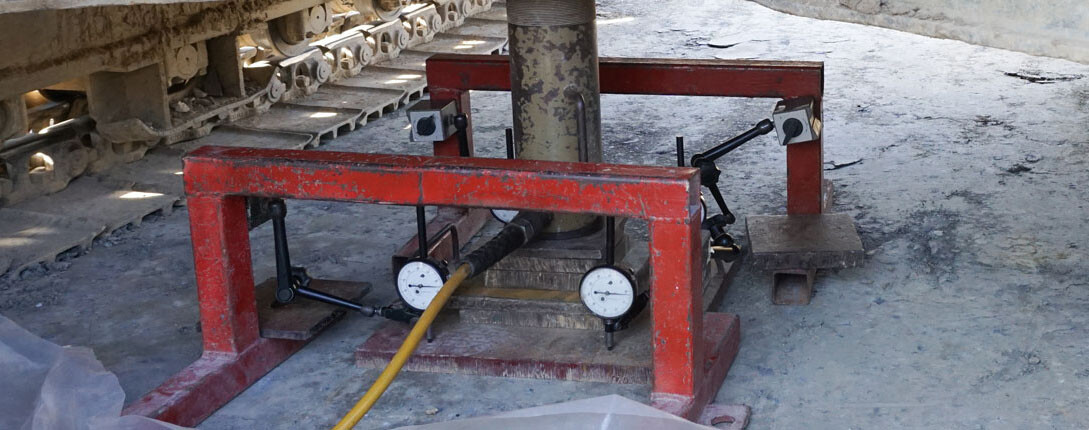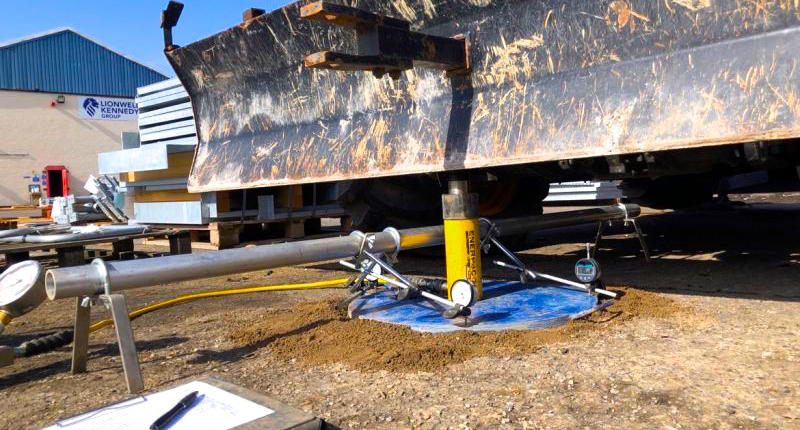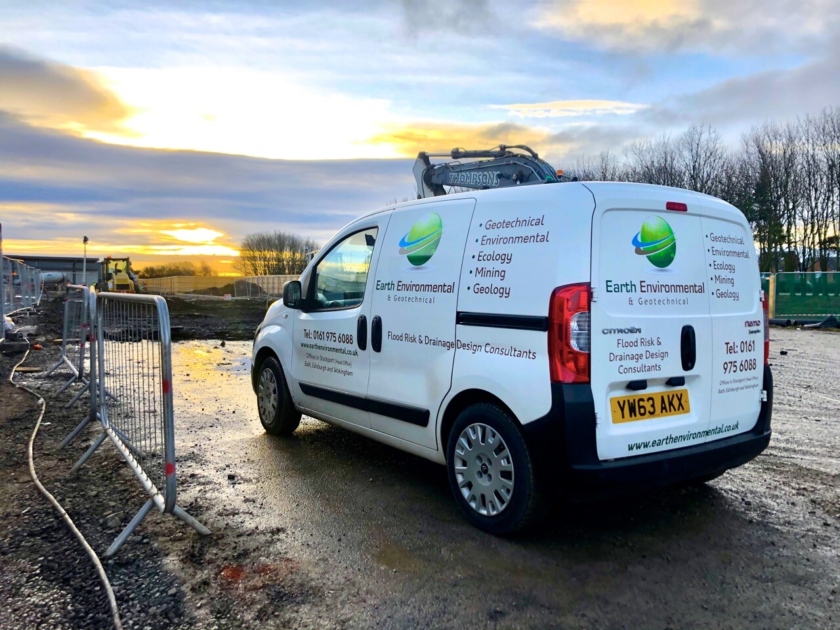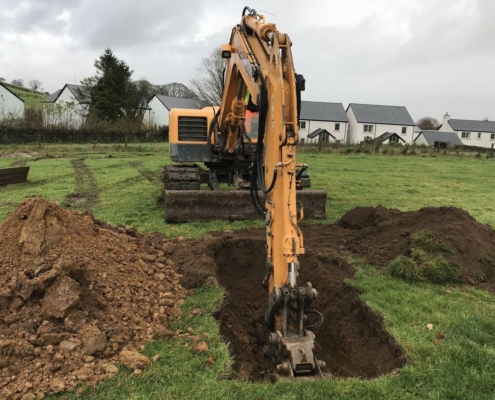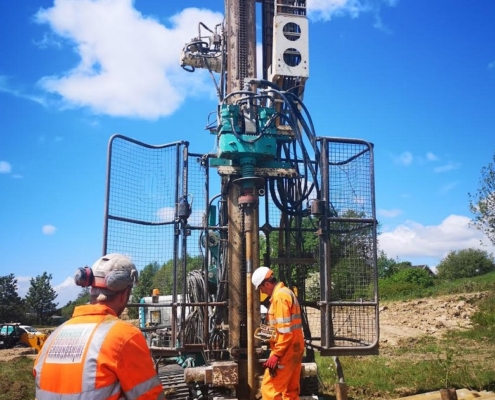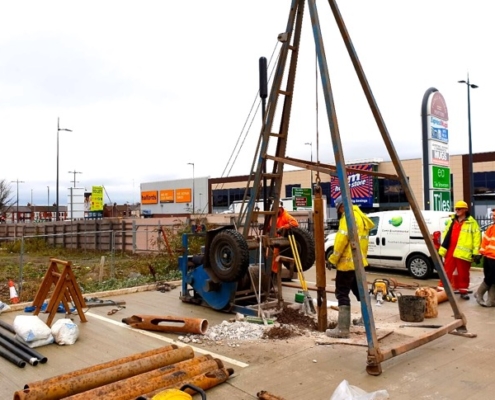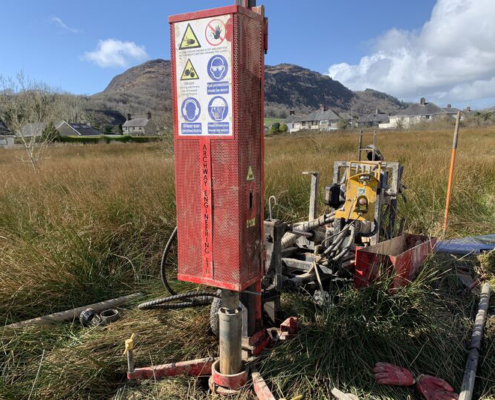What is a Plate Bearing Test?
What is a Plate Bearing Test?
Example of a Plate Bearing Test
More Information on Site Investigation Services.
What Is the Site Investigation Process?
Site investigations are carried out with a phased approach
- Phase 1 Desk Study
- Phase 2 Intrusive Site Investigation
- Phase 3 Post Site Investigations
- Phase 4 Site Investigations Report
Step 1 – Complete the Phase I Desk Study and site walkover.
A Phase 1 Desk Study is a preliminary risk assessment report for a development site, often required for planning application approval.
Ideally, a Desk Study should also be accompanied by a walk over a survey conducted by an experienced practitioner. By compiling available information in relation to a site’s environmental, geological, hydrogeological, hydrological and mining setting, a cost-effective and focussed site investigation will be developed.
A Phase 1 Desk Study should always precede any ground investigation.Using the interpretive report to highlight potential development issues, environmental and cost liabilities requiring further investigation.
Step 2 – Phase 2 Intrusive Site Investigation
A Phase 2 assessment consists of an Intrusive Site investigation with quantitative risk assessment. The Phase 1 Desk Study will highlight the areas for further investigation and define the scope of these works. Any potential pollutant linkages can then be prioritised for investigation and depending on the Phase 1 Desk study report the appropriate investigation techniques utilised.
Step 3 – Post Site Investigations
Once the preliminary site investigations have been completed the results are analysed. If further site investigations are required these can be completed by our multi-disciplined team. These could include:
- Environmental Monitoring
- Soil Testing
- Geotechnical Monitoring
- Slope Stability Assessment
- Radon Monitoring
- Remediation Designs
- Gas protection measures.
Step 4 – Site Investigation Report
An interpretive report will then be compiled from all the information and data gathered from the ground investigations, testing, monitoring for the site.
Our Earth Environmental & Geotechnical consultants can discuss the details of the report and provide further services as required
What is a Plate Bearing Test?
Plate bearing tests are also known as Plate Loading Tests and are required to establish the load bearing capacity of the ground and the anticipated settlement beneath the load.
When is a Plate Bearing Test Used?
Plate bearing tests, defined in BS1377 part 9: 1990 and Eurocode 7, are used when designing any permanent or temporary structures to ensure safe loading. The Plate Bearing Tests are in -situ soil tests for civil engineering purposes.
Before heavy machinery or temporary structures like crane bases and pads for crane outriggers, piling mats or platforms are installed it is essential to have an understanding of the ground conditions and what equipment and structure the ground can support.
A Plate Bearing Test determines the ultimate bearing capacity and settlement of the ground for working platforms, crane outrigger pads and piling mats.
What is involved in a Plate Bearing Test?
The Plate Bearing Test is carried out in accordance with BS 1377 Part 9: 1990 and consists of loading a steel plate and recording the settlement corresponding to each load increment.
Plate Bearing Test is normally carried out at foundation level, either on the surface or in a shallow pit. Plates of varying sizes up to 720mm diameter are available.
The loading plate is placed on the ground and connected via a load cell to a reaction load. Due to the larger size of the plate used (compared with a CBR test) this test is more suitable for testing larger aggregate backfills, however, it requires a larger reaction load.
Typically, a minimum 15tonne tracked excavator or other suitable plant is required for us to use as a reaction load.
Our engineers will advise on the plate size required to match the design load and reaction load required (i.e. size of excavator).
We can typically complete six tests in a day, subject to site conditions and can provide results the following day.
Plate bearing tests are mainly used when designing and safety testing
-
Temporary Structures and Working Platforms
-
Piling mats
-
Crane bases
-
Testing of bases & shallow foundations for temporary buildings and structures
Call Now
Earth Environmental & Geotechnical has Regional Offices providing Nationwide coverage, we offer in-situ testing services which include CBR and Plate Bearing Tests, our team of skilled professionals provide efficient cost effective testing and rapid reporting of results. Plus advice on next steps where required.
Call us now to discuss your project
Plate Bearing Test
Soils and aggregate testing for construction, civil engineering and geotechnical projects
Site Investigation Intrusive Techniques Examples:
- Cable Percussive Boreholes
- Window Sample Drilling
- Deep Window Sample Borehole
- Rock Coring
- Rotary Boreholes
- Rotary Core Drilling
- Dynamic Probing
- Trial Pits
- Trenches
- Windowless Sampling Rig
- Soakaway Testing
- Modular windowless sampling drilling rig
- Plate bearing testing
- California bearing ratio (CBR) testing


